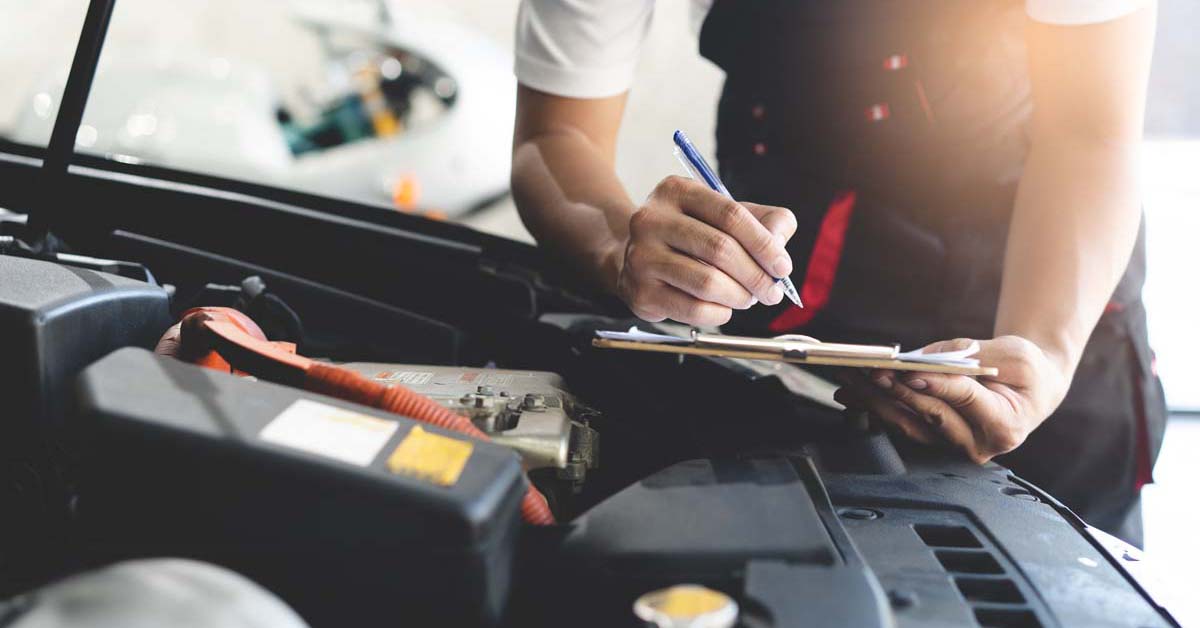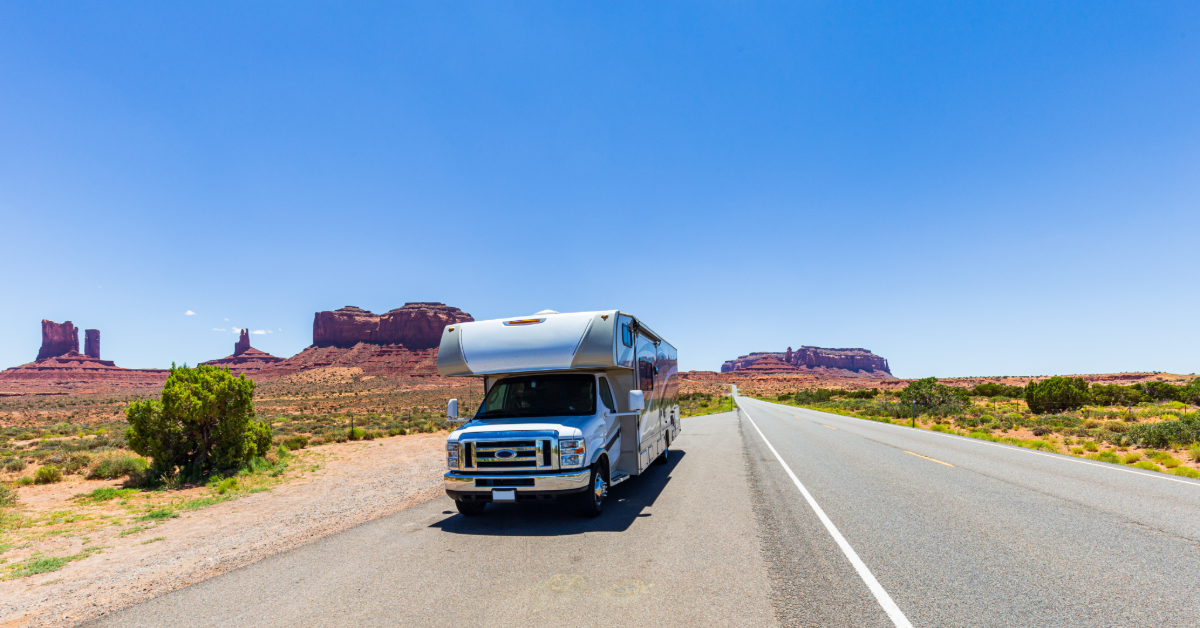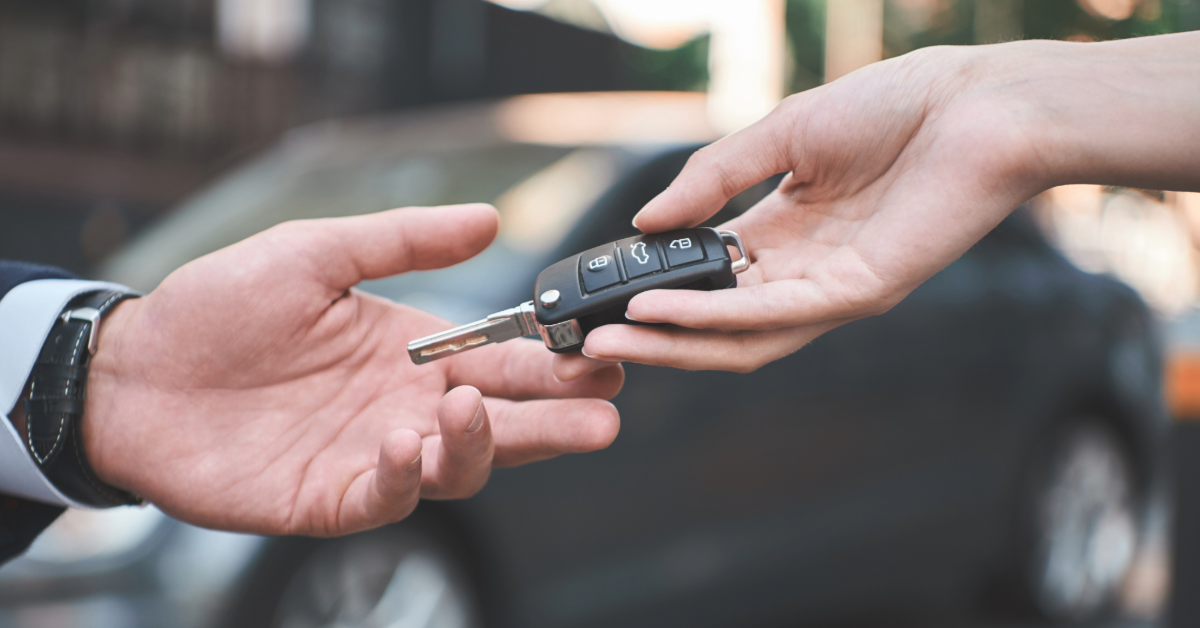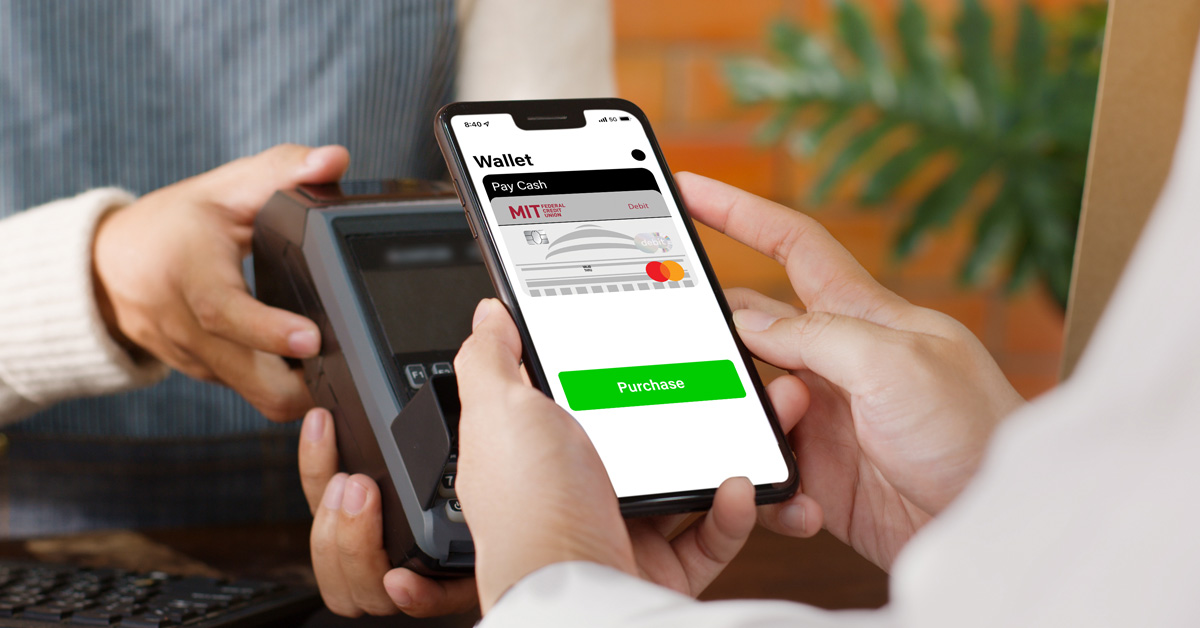Auto Expenses - And We Don't Mean the Loan Payment
As I mentioned in my first post, Life on a Budget, most of us are familiar with car loans. In 2019, according to the Federal Reserve, Americans had $1.3 Trillion in auto loan debt. That's a lot of debt and a lot of individuals dealing with car payments. And every year, the prices of cars go up, along with the loans people get to pay for them. Pandemic auto shopping was even more of a challenge, with used car prices (when you could find a used car) much higher than people expected. Add to that the fact that CDC guidelines significantly reduced the ability to get out and do a test drive. But this post isn't about buying a car or negotiating a price or any of that.
Looking to see how much car you can afford? Try our car loan calculator
The purpose of this post is to cover all those other expenses that come with owning a car - expenses you may forget to put into your budget when you're buying a car. There's nothing like the smell of a new or new to you (they have air fresheners for that) car. But there's also nothing like getting a repair bill, an unexpected "routine" maintenance bill, or even a smaller than expected insurance settlement check and realizing you’re short when it comes to needed cash. And beyond those unexpected surprises come the routine maintenance and expense of a car. This post reminds you of all those expenses while provide suggestions and resources to help. Because let's be honest; a car needs to be fed and cared for just like the member of your family it will soon become.
Car Insurance – Did You Know?
If you haven't yet purchased your car, it might be helpful to consider that the make, model, trim, age, and body type can cause your insurance premium to be higher than average. But that's the simple part.
There are so many other factors that can effect the cost of your auto insurance:
- Your age - (higher costs if you are below 20 – 25 years of age, or once you hit your mid-50s
- Driving history - How many tickets and charges have been filed against you? (Speeding tickets, DUI, and reckless driving)
- Credit Score - (I know, seems unrelated, right?) A low score could cost you as much as $1,500 annually in insurance premiums. Is your credit score lower than you'd like? Consider the tips in our posts What if my Credit Score is Zero? or Credit Card Management Tips.
You may be saying, "well, that seems arbitrary." But according to The Zebra, "Data shows that drivers with poor credit file more claims than do drivers with better credit." In the market for a great rate on auto insurance? View the auto insurance options available from our partner TruStage. - The number of years of driving experience - The more experience, the better.
- Location (where you live and where the vehicle will be parked) - Insurance is regulated at the state level and varies from state to state regarding minimum coverage required, etc. Your zip code comes into play because that defines the total number of drivers on the roads in your area, the likelihood of flooding, wildfires, crime, and other risks. Get a few quotes to see what you can expect to pay. Bundling policies (auto, homeowners, renters, etc) can also help you save. Also, ask about affinity discounts. Sometimes affiliation with certain educational institutions, or employer groups receive discounts.
- Gender - For younger drivers, male drivers usually pay a higher premium. In fact, the difference can be as much as $800 more per year vs. a female driver. I can hear the "gender equality" and "why shouldn't everyone be treated equally?" comments coming. But, as with credit scores, there is a difference in the number of claims filed; in this case, it breaks out by gender with male teen drivers filing more claims than females. Females tend to be more conservative drivers. That difference in statistics impacts the cost of insurance.
- Insurance history – If you're a brand new driver, this doesn't have as big an impact. But if you've had a license to drive and not been covered by insurance, there is concern that you may have been driving without insurance. Depending on where you're driving and which company you use for insurance, it can add $200 to your cost for insurance.
- Mileage – mainly considered in California. Those drivers with mileage below 7,500 annually may pay less than those who drive more than 15,000 miles. On average, it can be a difference of $92 per year, but in California, it can be over $500!
- Marital status – Data shows that married couples file slightly fewer individual claims since they usually share driving responsibilities. The difference in premium due to this is minimal.
- Claims history - Every time you file a claim, or someone files a claim against you, you will likely see an increase in your premium. It can be significant, and usually kicks in shortly after the claim is made. Too many claims, and you may end up losing your insurance.
A long list of bad news, right? But there is good news!
There are ways to qualify for auto insurance discounts:
- Anti-theft devices
- e-Pay
- Good driver discounts
- Good student discounts
- Green vehicles
- Low mileage
- Loyalty
- Military
- Multi-vehicle discounts
Insurance is an important cost when owning a car and is required in all states but New Hampshire and Virginia (and usually there as well if you're getting an auto loan). Be prepared and include this cost in your budget. And remember, insurance is a function that relies on risk ratings. The higher risk the data indicates, the higher the rate you'll get charged on your insurance premium.
What's GAP Insurance anyway?
Did your dealer or your lender try to sell you GAP insurance? It can sound like a complex thing and maybe even a “scam.” But it's not. It's definitely NOT like those salespeople who try to sell you an extended warranty on ink cartridges at the local office supply store, or that person at the box store telling you they have to offer extended warranty on your electric toothbrush, but you don't really need to buy it. GAP is something very different and a huge help for the right loans. That's the key, knowing when it's right for you. While it’s not technically a cost you’ll add to your budget (since it gets rolled into your auto loan) it still raises your auto loan payment slightly and it can save you a lot of trouble and expense if something happens.
MIT FCU offers GAP insurance which is no doubt less expensive than the same coverage offered at the dealer, so check with your lender first. Very likely, they're offering you the best deal.
That being said, make sure GAP coverage is the right thing for you. GapInsuranceQuotes.org offers a few simple questions to assist you in making that decision.
- Will you be financing a new car for more than 60 months?
- Is your down payment smaller than 20%?
- Are you offering a trade-in that is worth less than you owe?
- Do you usually put a lot of mileage on your new financed/leased car?
If you answered "yes" to any of the above questions, you're at an increased risk of losing money if your car is totaled or stolen.
Why? Because the value of your car drops as soon as you drive it off the lot (or accept delivery via one of the online car dealers). It also drops faster if you put excess mileage on it or take longer than 60 months to pay your loan off. You end up paying very little towards principal (the loan amount) in the first few years, and the loan goes "upside down" quickly in that timeframe, meaning you owe more than it's worth. Rate Genius offers a good explanation of how simple interest, and the interest in auto loans work.
The good news? These are the types of car purchases and the related loans GAP coverage was made for. They can protect you from having to pay on a loan when you, through no fault of your own, suddenly don't have the car and the insurance money isn't enough to pay off that loan. Guaranteed Asset Protection (GAP) coverage is exactly what it says. It protects your asset's value (your car, truck, or other vehicle) if that value has declined, and due to an accident, theft, or vandalism, the value assigned at the time of that event isn't sufficient to cover the loan balance you're carrying. Don't think it won't happen. I know someone who wrapped her new car around a tree on the drive home from the dealership on a snowy day! And she HAD purchased GAP, so it wasn't such a bad day (and no one was injured). Her car had already depreciated because she'd borrowed more than the purchase price to pay off the remaining balance on her trade-in. The value of the totaled car (because it literally started depreciating when she drove it off the lot) was less than her total loan balance, because she hadn't even made her first payment yet. But GAP stepped in to pay the difference, plus she got a bit of money to put towards her next car. She was thrilled.
Lesson? Better to be prepared, and purchase GAP coverage if it makes sense for your situation. And reminder, you can roll the cost of GAP into your auto loan, so you won’t need to keep it in your budget, but it can keep your budget from going off track if something happens. Forgot to purchase GAP when you got that new car? Contact your lender. This is an expense you may be able to purchase even after you've closed on your loan and driven that new car home.
Car Insurance can be complicated.
This post is long enough without adding more details about car insurance. Smart Financial some great questions to consider if you decide to research car insurance. I'd recommend finding an insurance agency you trust and letting them guide you. Still, many of the answers outlined on Smart Financial's site are educational and could assist you in being prepared as you compare quotes. Our partners at TruStage also offer auto insurance and can provide bundled options for you.
What powers your car? What's it going to cost you?
Most cars still use gasoline these days. Interesting to note: In January through April though, electric cars represented 2.3% of cars registered in the US. That's a 36% increase according to The Drive. But still, gas is predominant and gas prices are rising. In some parts of the country a gallon of gasoline can cost in excess of $4.00/gallon. Definitely something to consider when creating a budget.
But how do you set a budget for gas? You'll need a few numbers:
- What do you get for mileage on your vehicle? Not the dealer average, but your actual experience? The types of roads, how fast you drive, and your style of driving can all have an impact on the actual mileage you get.
- How many miles a week do you normally drive, annualized. Not just commuting but all those weekend trips, quick errands, and driving the kids to soccer and flute lessons and play dates. Got kids that use your car? Or a spouse? That mileage counts, too, unless they're filling the tank.
- Average price per gallon of gas in your area
Take the total miles driven divided by miles per gallon x price per gallon. Then break it down in whatever measure your budget is set, weeks, months, annual?
You'll quickly see that living in an area where gas is $2.50/gallong means a lower budget number than those areas where it jumps over $4.00.
You also need to calculate a line item for oil, filters and other car maintenance costs. Read on for ways to estimate those in the next section. To find cheap gas in your area, try these gas locator apps and more recommended by WellKeptWallet. But keep in mind, if you drive a long distance to cheaper gas, is it really cheaper?
- GasBuddy
- Gas Guru
- Waze
- GetUpside (which offers rewards)
Try them out or keep your eyes open for local stations with low prices, then plan your fill-up accordingly.
For those who plug in their car at night
And let’s not forget electric cars (all 2.3% of them). It does cost money to charge them, but no doubt significantly less than what you’d pay for gasoline. AFDC.energy.gov provides a great calculator to estimate cost for charging an electric car. Based on data from kbb.com the average cost for charging your car at home is twelve cents. Most charging stations charge at least that, although some retailers offer free charging. If you’re on the road a lot and can’t take advantage of the lower cost of charging at home, plugshare.com offers a map of charging stations across the country. If there is enough need, between employees and clients at your office, you may be able to convince your company to install one or two at work as well. My office has them, but we discovered cars from other locations (walkable distance) were usually using them. We worked out an arrangement with those individuals because let’s be honest, depending on where you work, it can be very difficult to find a convenient charging station.
Plan for routine maintenance and make it routine
Yes, it does make a difference. When your car is maintained properly, it runs more efficiently, using less gas and oil. It’s also less likely to break down unexpectedly costing you even more. Routine maintenance covers the following items.
- Oil and filter
- Tire rotation
- Tires
- Wiper blades
- Engine air filter
- Brake Pads
- Cabin Filter replacement
- Fluid inspection and adjustment
The recommended frequency of above car maintenance is usually outlined in your owner’s manual. Things needing to be replaced and repaired definitely increase as your vehicle gets older but many cars these days run for multiple hundreds of thousands of miles if cared for properly. Keep in mind though, just assuming every car needs an oil change every 3,000 miles may cost you more. It may have been true in your father or grandfather’s day, but some new vehicles can go 5,000 – 7,500 or more between oil changes. Frequency also varies based on whether you idle your engine a lot, drive in extreme heat or cold, tow heavy loads, drive in dust or gravel frequently and more.
Do extended warranties help?
Some warranties require service by a specific dealer. Go to a local mechanic, or a different dealer and you may risk losing your warranty. As with everything, read the information you’re provided, and ask questions. Nerdwallet provides more detail on what routine car maintenance should cost. If you don’t want to take the time now figure out how much you should save, you may pay for it later. When you’re ready to sign on your purchase with the dealer, they’ll also try to sell you extended warranties. I’ve purchased these for various cars and in one instance it saved me thousands of dollars.
What about a maintenance plan?
Some dealers, and some lenders, offer an all-in maintenance package as an upsell. Edmunds offers their opinion on those prepaid car maintenance plans. It might be a good idea, if it’s backed by the manufacturer and doesn’t restrict you to a single service provider. Be aware though. These plans usually cover only routine maintenance and sometimes do not cover replacements parts, like tires, wipers, etc. When I was younger and buying my first brand new car, I bought one of these plans thinking it would force me to go in and get these things done on a regular basis. I wanted incentive to take care of my car. I was wrong, and definitely did NOT get my maintenance as frequently as my plan called for. I am an example of someone who wasted money on a maintenance plan... because that's how I was when I was younger.
While these additional coverages are usually rolled into your auto loan, they are still something to consider. Purchase will mean that your auto loan payment will be higher. Not buying them, and not setting aside funds for related repairs and upkeep is just ignoring an expense you’ll have to fund eventually.
What happens when the unexpected happens?
And by unexpected I mean flat tires, lockouts, all the lights on your dashboard come on and your car dies on the side of the road. Things that happen and you usually kick yourself because you didn’t buy that roadside maintenance protection. Having been there myself, I can tell you, that protection can save you. Even if you DO know how to change a tire. I had a flat tire one day and called for assistance. They were going to be an hour or more so my wife decided to leave work early and come to “save” me. Unfortunately, as she was changing the tire, something she’d been doing for years, the jack slipped… and we ended the day at the emergency room, with the local fire chief changing my tire which my wife took a ride in an ambulance. It was a very scary lesson. But later, we allowed coverage to slip and found ourselves with a flat and an expired membership with AAA. A quick phone call and they handled renewal right over the phone and sent their crew over (the crew was actually parked on the other side of the building we were at amazingly enough). So is roadside protection a good idea? What should it cover? I’d say it is a good idea. And there are a number of things it can cover:
- Flat tire
- Battery jumpstart
- Towing
- Oil, gas, fluid delivery (gas? really? Why would that happen?)
- Towing
- Getting you out of a snow bank (I’ve used this)
- Lockout assistance (great when your two year old gets in and locks the door)
Just make sure you read the fine print. Some services like towing are only good within a certain range, Which means when you’re on a road trip they probably won’t tow your car home, unless that road trip is just a few hundred miles away. But usually you just have to pay the difference. There are multiple companies offering these services. I did a search today and found 34.8 million entries on Google. So you’ve got plenty of choices. Just read through what is being offered and decide what’s right for you.
How Clean is My Car?
Some people live in their cars, spend huge chunks of each day in their car, have racks of dress shirts, and boxes of snack food stored there, and are perfectly fine with the odd fast food fry box, and drive thru coffee cup lying around. Others transport VIPs (maybe even their family) or need to keep up with pet hair cracker crumbs, and cleat droppings, so car detailing is a must. I also know numerous people who just love a clean, fresh washed car, and hit the carwash at least once a week if not more often. If this is you, consider the cost of carwashes and detailing in your budget. You can certainly consider it part of the “money for me” line item, but if it’s a constant, why not budget that money? A once-every-few-months wash is certainly not going to break you, but if you’re the one who buys car wash coupon booklets and has onsite detailers in the parking lot at work, it’s an expense. Why not track it?
So that’s it on those expenses beyond your car loan. It’s a lot to digest. But if you’re a person who likes a detailed budget or wants to find places to save, consider all of these. It can make, or break that budget of yours.
Resources:
- money.cnn.com/
- finder.com/car-loan-statistics
- thezebra.com
- motor1.com
- financesonline.com
- smartfinancial.com
- afdc.energy.gov
- wellkeptwallet.com
- kbb.com
- plugshare.com/
- nerdwallet.com
- edmunds.com
« Return to "Blog"
Tags

Auto Expenses - And We Don't Mean the Loan Payment
There's also nothing like getting an unexpected bill and realizing you’re short when it comes to cash.

What You Need To Know About An RV Loan
When mobility or daily living becomes more challenging, an accessibility loan can make a life-changing difference.

All You Need To Know About Buying A Used Car
Buying a previously owned vehicle can also be a great way to save big on one of your most valuable possessions.





